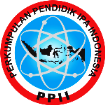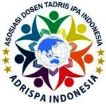Efektivitas Penggunaan Aplikasi Kahoot Sebagai Alat Evaluasi pada Mahasiswa
Abstract
This study aims to determine the effectiveness of the kahoot application as an evaluation tool for students in terms of student motivation and attention. This type of research is quantitative, with a one shot case study design. The population in this study were all 3rd semester students of the Riau University Biology Education Study Program who took the instructional media course, the sampling in this study was through purposive sampling, which is one class of the 3rd semester students who took the instructional media course. The research instrument consisted of a motivation and attention questionnaire which was used after the students had conducted lectures with an evaluation sistem using the kahoot application, observation sheets and a list of interview questions. The validity and reliability of the motivation and attention questionnaires have been tested, the reliability value of the motivation and attention questionnaire is 0.835. The results showed that the level of effectiveness of the kahoot application on student motivation was 82.6% with the very effective category and 80.6% for student attention with the very effective category. So it can be concluded that the kahoot application is very effective as an evaluation tool in terms of motivation and attention.
Keywords: effectiveness, kahoot, evaluation tool
ABSTRAK.
Penelitian ini bertujuan untuk mengetahui efektivitasi aplikasi kahoot sebagai alat evaluasi pada mahasiswa ditinjau dari motivasi dan atensi mahasiswa. Jenis penelitian ini adalah kuantitatif, dengan desain penelitian one shot case study. Populasi pada penelitian ini adalah seluruh mahasiswa semester 3 Program Studi Pendidikan Biologi Universitas Riau yang mengikuti mata kuliah media pembelajaran, pengambilan sampel pada penelitian ini melalui purposive sampling, yaitu salah satu kelas mahasiswa semester 3 yang mengikuti mata kuliah media pembelajaran. Instrumen penelitian terdiri dari angket motivasi dan atensi yang digunakan setelah mahasiswa melakukan perkuliahan dengan sistem evaluasi menggunakan aplikasi kahoot, lembar observasi dan daftar pertanyaan wawancara. Angket motivasi dan atensi telah diuji validitas dan reliabilitasnya, nilai reliabilitas pada angket motivasi dan atensi adalah 0,835. Hasil penelitian menunjukkan bahwa tingkat keefektifan aplikasi Kahoot terhadap motivasi mahasiswa yaitu sebesar 82,6% dengan kategori sangat efektif dan untuk atensi mahasiswa yaitu sebesar 80,6% dengan kategori sangat efektif. Sehingga dapat disimpulkan bahwa aplikasi Kahoot sangat efektif sebagai alat evaluasi ditinjau dari motivasi dan atensi.
Kata kunci: efektivitas, kahoot, alat evaluasi.
Full Text:
PDFReferences
Arikunto, S. (2012). Penelitian Tindakan Kelas. Jakarta: Bumi Aksara
Barrio, C. M., Organero, M. M., & Soriano, J. S. (2015). Can gamification improve the benefits of student response sistems in learning ? An experimental study. IEEE Transactions on Emerging Topics in Computing, 4(3), 429–438.
Brooks, R., Brooks, S., & Goldstein, S. (2012). The Power of Mindsets; Nurturing Student Engagement, Motivation, and Resilience in Students. In Handbook of Research on Student Engagement (pp. 541–562).
Çankaya, S., & Karamete, A. (2009). The Effects Of Educational Computer Games On Students’ Attitudes Towards Mathematics Course And Educational Computer Games. Procedia - Social and Behavioral Sciences, 1(1), 145–149.
Cheng, C. H., & Su, C. H. (2012). A Game-Based Learning Sistem For Improving Student’s Learning Effectiveness In Sistem Analysis Course. Procedia - Social and Behavioral Sciences, 31(2011), 669–675.
Cheong, C., Cheong, F., & Filippou, J. (2013). Quick Quiz: A Gamified Approach For Enhancing Learning. Proceedings - Pacific Asia Conference on Information Sistems, PACIS 2013.
Dellos, R. (2015). Kahoot! A Digital Game Resource For Learning. International Journal of Instructional Technology and Distance Learning, 12(4), 49–52.
Demirbilek, M., & Tamer, S. L. (2010). Math Teacher’s Perspectives On Using Educational Computer Games In Math Education. Procedia - Social and Behavioral Sciences, 9(1), 709–716.
Dornyei, Z., & Otto, I. (1998). Motivation in Action: A Process Model of L2 Motivation. In Working Papers in Applied Linguistics, Vol. 4 Thames Valley University.
Emda, A. (2018). Kedudukan Motivasi Belajar Siswa Dalam Pembelajaran. Lantanida Journal, 5(2), 172-182
Erhel, S., & Jamet, E. (2013). Computers & Education Digital Game-Based Learning: Impact of Instructions and Feedback on Motivation and Learning Effectiveness. Computers & Education, 67(1), 156–167.
Fauzan, R. (2019). Pemanfaatan Gamification Kahoot. IT Sebagai Enrichment Kemampuan Berpikir Historis Mahasiswa Pada Mata Kuliah Sejarah Kolonialisme Indonesia. Prosiding Seminar Nasional Pendidikan FKIP Universitas Sultan Ageng Tirtayasa, 2(1), 254–262.
Filsecker, M., & Hickey, D. T. (2014). A Multilevel Analysis Of The Effects Of External Rewards On Elementary Students’ Motivation, Engagement And Learning In An Educational Game. Computers and Education, 75(1), 136–148.
Fraenkel & Wallen. (2012). How to Design and Evaluate research in education. New York: Mc Graw Hill.
Gee, J. P. (2007). Good Video Games+ Good Learning: Collected Essays On Video Games, Learning, and Literacy. Peter Lang.
Gibson, P. F., & Smith, S. (2018). Digital Literacies: Preparing Pupils and Students For Their Information Journey in The Twenty-First Century. Information and Learning Science, 119(12), 733–742.
Grimley, M., Green, R., Nilsen, T., David, T., & Tomes, R. (2011). Using Computer Games For Instruction: The Student Experience. Active Learning in Higner Education, 12(1), 45–56.
Guardia, J. J., Del Olmo, J. L., Roa, I., & Berlanga, V. (2019). Innovation in The Teaching-learning Process: The Case of Kahoot! On the horizon, 27(1), 35–45.
Hitosugi, C. I., Schmidt, M., & Hayashi, K. (2014). Digital Game-Based Learning (DGBL) in The l2 Classroom: The Impact of The Un’s Off-The-Shelf Videogame, Food Force, On Learner Affect And Vocabulary Retention. CALICO Journal, 31(1), 19–39.
Hsieh, Y., Lin, Y., & Hou, H. (2016). Exploring The Role Of Flow Experience, Learning Performance And Potential Behavior Clusters In Elementary Students’ Game-Based Learning. Interactive Learning Environment, 24(1), 178–193.
Hung, C., Sun, J. C., & Yu, P. (2015). The Benefits of A Challenge : Student Motivation and Flow Experience In Tablet-PC-Game-Based Learning. Interactive, 23(2), 172–190.
James, William. (2007). The Principles of Psychology. Vol.1. New York: Inc
Kasiram, Moh. 2010. Metodologi Penelitian : Kualitatif-Kuantitatif. UIN Maliki Press: Malang.
Ke, F. (2008). Computer Games Application Within Alternative Classroom Goal Structures: Cognitive, Metacognitive, and Affective Evaluation. Educational Technology Research and Development, 56(5–6), 539–556.
Kebritchi, M., Hirumi, A., & Bai, H. (2010). The effects of modern mathematics computer games on mathematics achievement and class motivation. Computers and Education, 55(2), 427–443.
Kim, B., Park, H., & Baek, Y. (2009). Not Just Fun, But Serious Strategies: Using Meta-Cognitive Strategies In Game-Based Learning. Computers and Education, 52(4), 800–810.
Kingsley, T. L., & Grabner-Hagen, M. M. (2015). Gamification: Questing To Integrate Content Knowledge, Literacy, and 21st-Century Learning. Journal of Adolescent and Adult Literacy, 59(1), 1–11.
Koivisto, J., & Hamari, J. (2014). Demographic Differences in Perceived Benefits from Gamification. Computers in Human Behavior, 35, 179–188.
Kong, J. S. L., Kwok, R. C. W., & Fang, Y. (2012). The Effects of Peer Intrinsic and Extrinsic Motivation on Mmog Game-Based Collaborative Learning. Information and Management, 49(1), 1–9.
Licorish, S. A., Owen, H. E., Daniel, B., & George, J. L. (2018). Students’ Perception of Kahoot! Influence on Teaching and Learning. Research and Practice in Technology Enhanced Learning, 13(9), 1–23.
Malinovski, T., Vasileva, M., Vasileva-Stojanovska, T., & Trajkovik, V. (2014). Considering High School Students’ Experience in Asynchronous and Synchronous Distance Learning Environments: QOE Prediction Model. International Review of Research in Open and Distance Learning, 15(4), 91–112.
Matlin, M.W. (2005). Cognition, (6th ed.). USA: John Wiley & Sons
Mei, X. Y., Aas, E., & Medgard, M. (2019). Teachers’ Use of Digital Learning Tool for Teaching In Higher Education: Exploring Teaching Practice And Sharing Culture. Journal of Applied Research in Higher Education, 11(3), 1–17.
Park, H. (2012). Relationship between Motivation and Student ’ s Activity on Educational Game. Journal of Grid and Distributed Computing, 5(1), 101–114.
Prensky, M. (2001). The Digital Game-Based Learning Revolution. Learning 1(1), 1–19.
Ravianto. (2014). Produktivitas dan Pengukuran.Jakarta: Binaman Aksara.
Seaborn, K., & Fels, D. I. (2015). Gamification in Theory and Action: A survey. International Journal of Human Computer Studies, 74(1), 14–31.
Siegle, D. (2016). Learning Can Be Fun and Games. Gifted Child Today, 38(3), 192–197.
Sugiyono. (2014). Metode Penelitian Kombinasi (Mixed Methods). Bandung. Alfabeta
Solso, R. L., Maclin, O. H., & Maclin, M. K. (2008). Psikologi Kognitif. Jakarta: Erlangga.
Tim Litbang Kemendagri. 1991. Skala Kriteria Analisis Varians. Fisipol UGM: Yogyakarta.
Trajkovik, V., Malinovski, T., Vasileva-Stojanovska, T., & Vasileva, M. (2018). Traditional Games In Elementary School: Relationships of Student’s Personality Traits, Motivation and Experience with Learning Outcomes. PLoS ONE, 13(8), 1–15.
Tüzün, H., Yilmaz-Soylu, M., Karakuş, T., Inal, Y., & Kizilkaya, G. (2009). The Effects Of Computer Games on Primary School Students’ Achievement and Motivation in Geography Learning. Computers and Education, 52(1), 68–77.
Ventura, M., Shute, V., & Zhao, W. (2013). The Relationship Between Video Game Use and a Performance-Based Measure of Persistence. Computers and Education, 60(1), 52–58.
Wang, A. I., & Lieberoth, A. (2016). The Effect of Points and Audio on Concentration, Engagement, Enjoyment, Learning, Motivation and Classroom dynamics Using Kahoot! In Proceedings from the 10th European Conference on Games Based Learning, 738. UK: Academic Conferences International Limited.
DOI: http://dx.doi.org/10.24014/jnsi.v3i2.9283
Refbacks
- There are currently no refbacks.

Journal of Natural Science and Integration
E-ISSN: 2620-5092 P-ISSN: 2620-4967
Published By:
Department of Science Education, Faculty of Education and Teacher Training,
State Islamic University of Sultan Syarif Kasim Riau, Indonesia
Mailing Address:
Jl. H.R Soebrantas Km. 15 No. 155
Kelurahan Simpang Baru
Kecamatan Tuah Madani, Pekanbaru, Riau, Indonesia
Email: jnsi.tadrisipa@uin-suska.ac.id
Indexed By:
Journal of Natural Science and Integration is licensed under a Creative Commons Attribution 4.0 International License.


_-_Copyy2.png)






.jpg)
.png)
.jpg)
.jpg)




